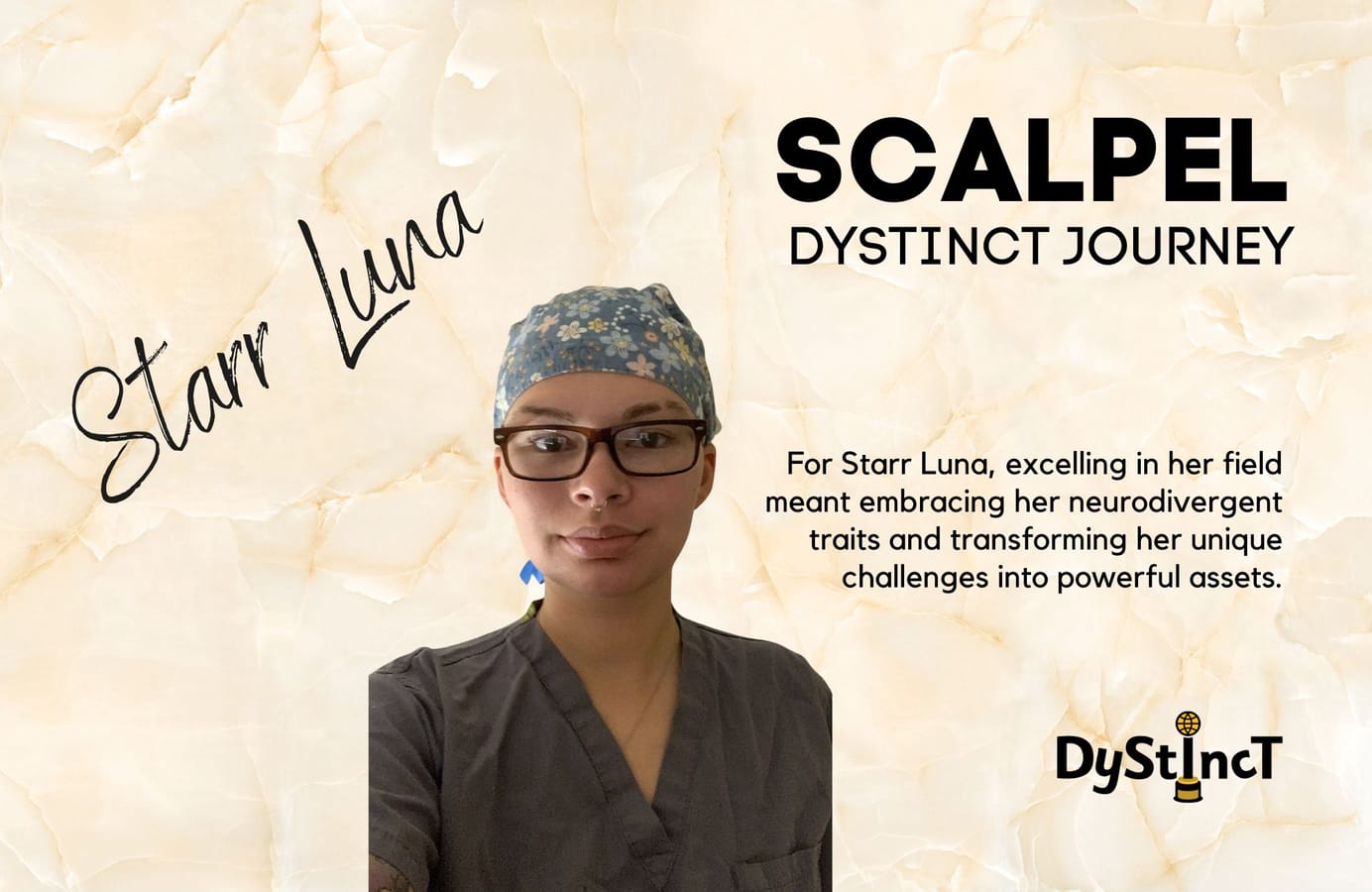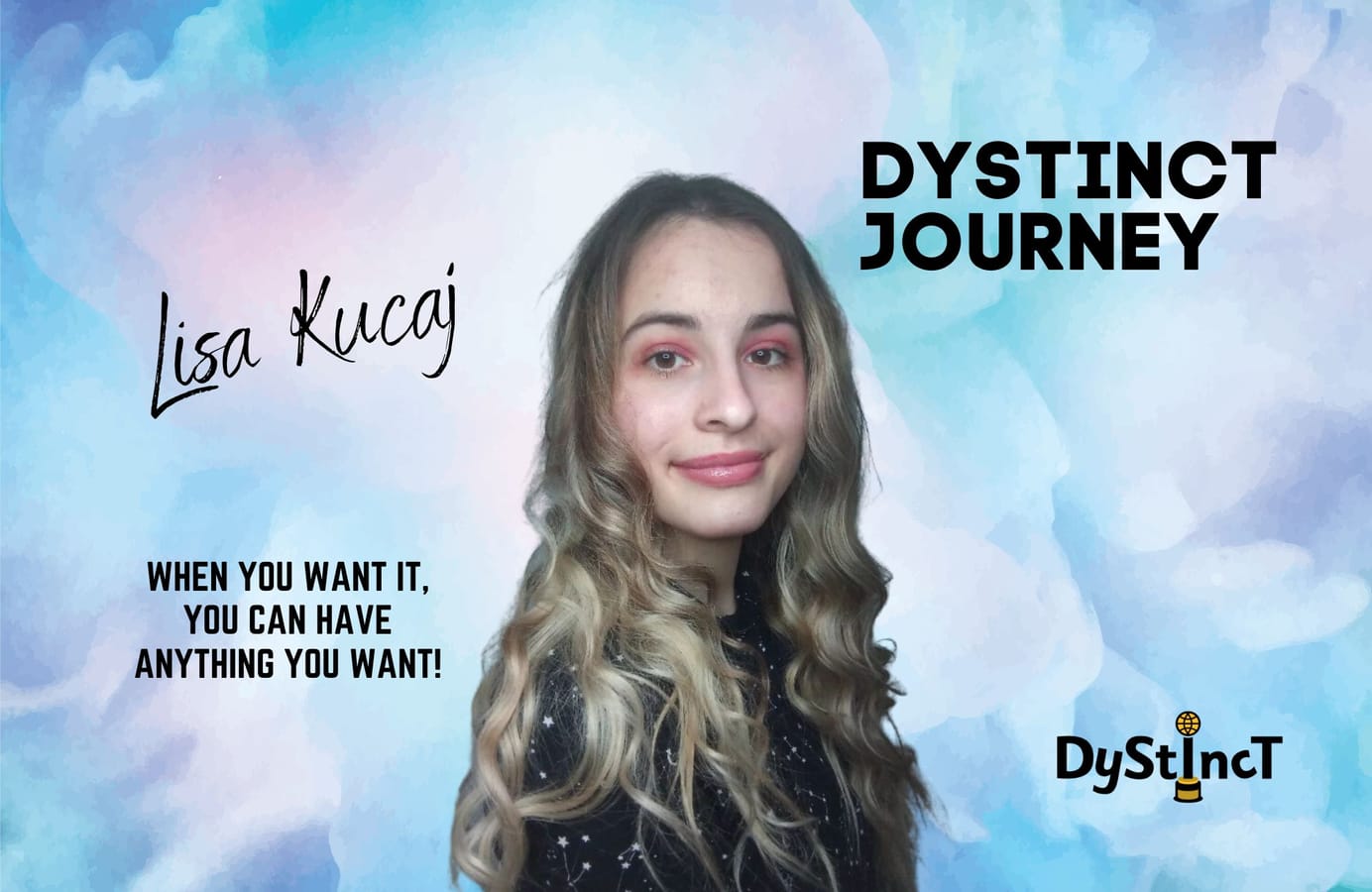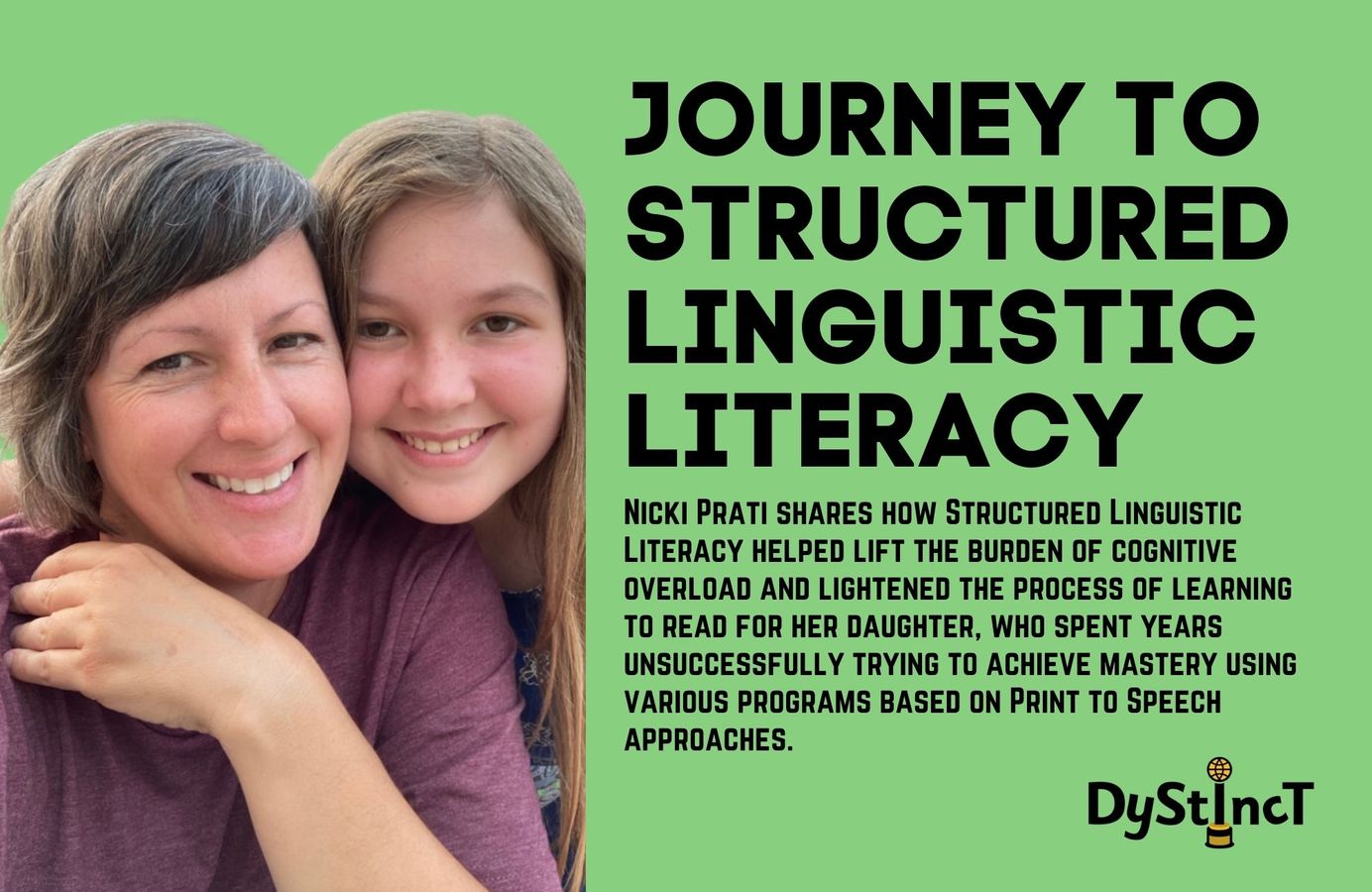
Issue 13: Journey to Structured Linguistic Literacy | Nicki Prati
Nicki Prati shares how Structured Linguistic Literacy helped lift the burden of cognitive overload and lightened the process of learning to read for her daughter, who spent years unsuccessfully trying to achieve mastery using various programs based on Print to Speech approaches.
Cut to the chase
According to Wiki, the history of the phrase 'cut to the chase' originated from the entertainment industry's car chase scenes in films. "Some inexperienced screenwriters or directors would pad the film with unnecessary dialogue, which bored the audience and prolonged the time before the exciting chase scene. Cut to the chase was a phrase used by movie studio executives to mean that the audience shouldn't get bored by the extra dialogue and that the film should get to the interesting scenes without unnecessary delays. The phrase is now widely used and means "get to the point."
After years of intervention and after-school tutoring with explicit Print to Speech methods, my child was still a struggling reader; the need to 'cut to the chase' became more significant. What started as a sense of urgency to get to "grade level reading" with structured, explicit instruction turned into four years of dual enrolment and home-schooling with a go-to home program for children with dyslexia. Lots of hours were spent trying to achieve mastery in phonemic awareness, segmenting and blending of the initial code in isolation, spelling "rules" and their exceptions, as well as decodable books. Eventually, after a total of six long years of intervention, we hit a roadblock called 'cognitive overload'.
Flip the script
Little did I know, when I settled into a standard Print to Speech oriented intervention, I had signed up for lesson upon lesson of 'all things spelling and syllable rules'. The split-attention problem-solving of learning cognitively heavy syllable division constructs and applying them to reading was exhausting. It was a deal breaker and a spirit crusher. We couldn't afford any more speed bumps. With preteen hood around the corner, I was back to the grindstone, looking for answers. Simpler, faster, and effective was key, as 'cut to the chase' had become critical. Times like these require a person to step back and reflect. Reflection led to a reassessment and another deep dive into instructional methods, literacy products and more reading science articles.
Fortunately, I had invested in a high-quality decodable book series for catch-up readers by Phonic Books, trusting that eventually, we would get to vowel teams. Yes, vowel teams! At age 12, we had stalled in syllable division rules, barely touched two letter vowel spellings, and hadn't reached the "magic E" lessons. Upon a closer look at the Phonic Books "Moon Dogs Vowel Series" decodables and its free online resources, I began to see a pattern emerge. Being a psych major and artist at heart, I stopped thinking about 'rules and exceptions' and allowed this new pattern to guide my home instruction. I was just going to have to do this thing on my own and literally 'flip the script' as I knew it by sticking with one sound to multiple spellings every couple of weeks.
Almost instantly, the weight of learning (and teaching) encoding and decoding lightened. It was a visceral experience for myself and my child. Fast forward to today, and I now know this was because we were working from the direction of language first, what some cognitive scientists call biologically primary skills. Not only were we starting from a place of strength, but explicit instruction was organized in digestible portions of sound spellings. I wasn't aware of the research demonstrating that starting from encoding first actually supports decoding, and I didn't know that current research found syllable division rules to be unreliable. What I did know is that the orientation and the way in which knowledge was dispensed in this method lightened the cognitive load tremendously. Teaching from this direction felt a bit like being taught a new card game and then being shown your opponent's cards; it made the game much easier.
Linguistic Phonics was keeping it simple by teaching the written code in the direction it was intended - from speech to print.
Now I needed to know why this new "way" was easier and whether I was doing it right. Being a pattern seeker, I collected as many like-resources on this approach as I could and found that the systems available today are generally called Linguistic Phonics, based on the work of the late Dr Diane McGuinness. I was pleasantly surprised to find many instructional resources available, some of which I had overlooked in years past, thinking they were just like the other structured programs I had used. Upon stepping back, it became clear that Linguistic Phonics was keeping it simple by teaching the written code in the direction it was intended - from speech to print.
Feel it to believe it
In the 1970s, a freshly minted PhD student in cognitive psychology named Dr John Sweller had just graduated, coincidentally in the same year and the same city of my birth, from the University of Adelaide and went on to establish what is known today as the Cognitive Load Theory. Dr Sweeny's findings were known in the field of cognitive psychology by the late 80s and well established by the time I hit college. I recall learning about the limitations of human memory in my psychology classes, particularly about our limited working memory that can only manage 3 to 7 bits of new information max. For a struggling reader, it's not hard to imagine that working memory is likely to be on the low end of this range, given the stress and anxiety they carry every day. In the early 2000s, along came psychologist Dr David Geary to shine a light on evolutionary skills by explaining how naturally evolved skills, such as language, are "biologically primary", whereas skills that must be learned, like our written code, are "biologically secondary". From the evolutionary lens, one can see why starting from our language, a place of strength, could make learning to read easier. Above all else, the Cognitive Load Theory goes a long way in explaining why creating schemas within Linguistic Phonics works so efficiently and perhaps why some have to "feel" it to believe it.
Orienting my teaching around the concept of the alphabetic principle itself by way of one sound and its spellings, a spelling and its sounds, or by spoken syllables was transformational. With time I began to understand better that the perks of Linguistic Phonics are the orientation, the instructional components and the reduction in cognitive load. Access to legitimate sound spellings finally allowed for an awareness of the alphabetic principle to bloom within my child, thus making the code retrievable while reading a book of my child's choice.
It is fitting that the phrase 'cut to the chase' is also known as 'cut to the Hecuba' for those who were tired of the long speeches within the plays like Hamlet and are ready for Act II. Parents and their struggling readers cannot afford nor tolerate the long speeches. We need literacy pronto.
References
- Cut to the chase [Wikipedia.org]
Article regarding Cognitive Load Theory
- Cognitive Load Theory – “the single most important thing for teachers to know” [gregashman.wordpress.com]
Book regarding Cognitive Load Theory
- A Little Guide for Teachers: Cognitive Load Theory, 1st Edition, Greg Ashman [Amazon.com]
Historical basis for Linguistic Phonics
- Why Our Children Can't Read and What We Can Do About It: A Scientific Revolution in Reading Paperback – March 24, 1999, Diane Mcguinness [Amazon.com]
Nicki Prati
S2P / Linguistic Phonics Exploration
Facebook
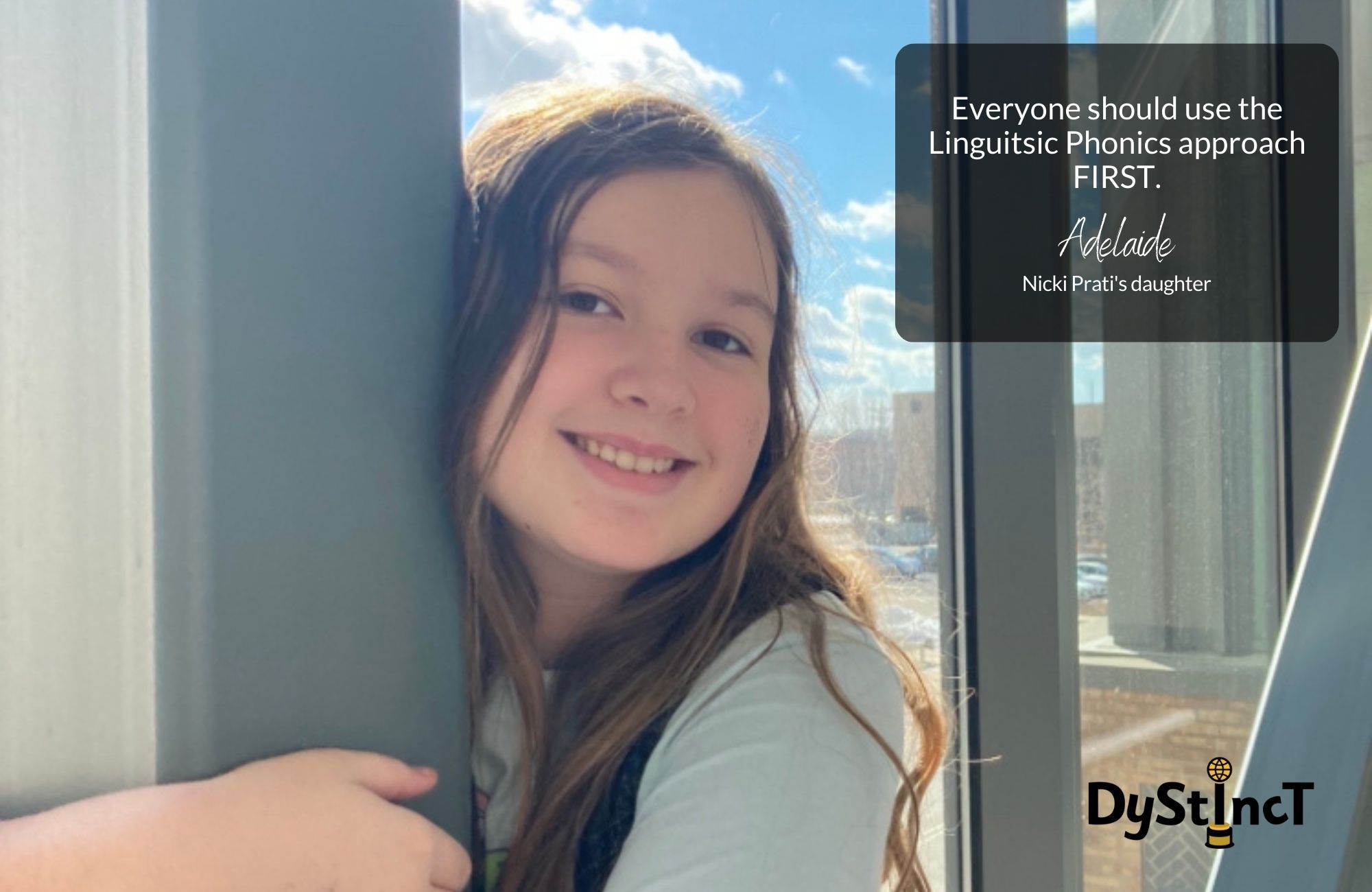
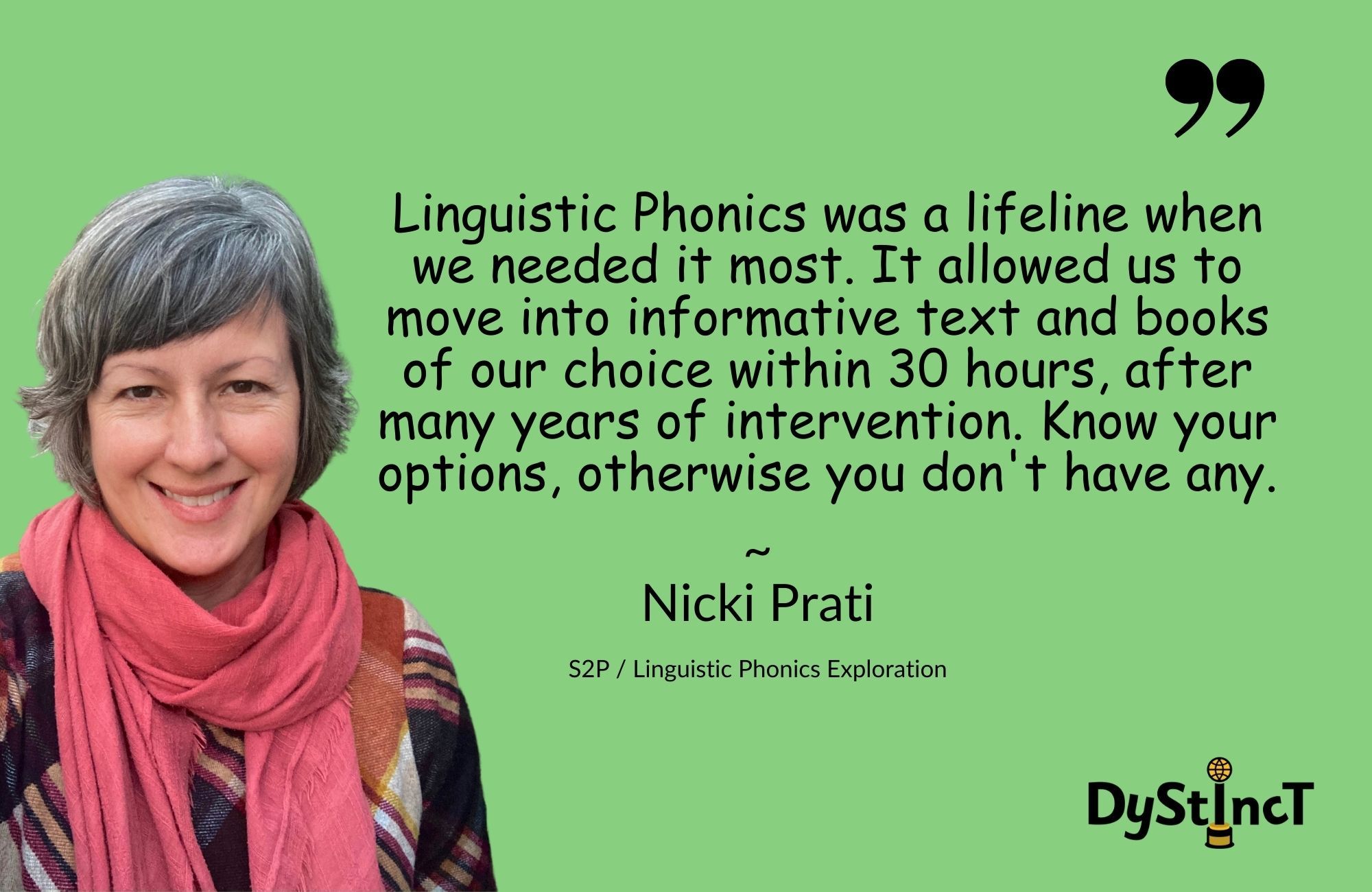
Nicki Prati is a social worker turned reading tutor who lives in the Midwest. After transitioning to homeschooling, she became a certified OG and Linguistic Phonics tutor. She is actively involved in advocating for struggling readers and their mental health, facilitates a parent support group for her local Decoding Dyslexia Iowa group and enjoys sharing what she's learned about Linguistic Phonics with others through her Facebook group: S2P / Linguistic Phonics Exploration. Everything she knows, she knows, thanks to her daughter.
Extracts from Dystinct Magazine











